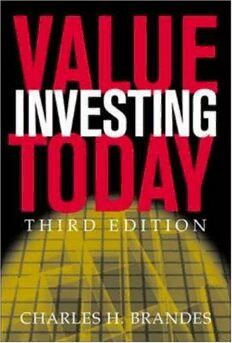
Value Investing Today PDF
238 Pages·2004·1.128 MB·English
Most books are stored in the elastic cloud where traffic is expensive. For this reason, we have a limit on daily download.
Preview Value Investing Today
Description:
Tests for Safety
1. Debt-to-Equity is less than 1
2. Current Assets are twice liabilities
3. Total Debt is less than twice net current assets
4. Annual earnings growth is at least 7 percent over the last ten years
5. No more than two year-to-year earnings declines of more than 5 percent during the last ten years.
Four step test for value
1. No losses within the past 5 years
2. Total debt is less than 100 percent of tangible equity
3. Share price is less than book value per share
4. Earnings yield is at least twice the yield on long term 20 year bonds
Share Price value
1. If a stock's price was less than two-thirds of net-net current assets per share. Investors buy excess cash for 67 cents on the dollar and get a full claim on the company's permanent assets for free. The company must be generating profits.
To calculate intrinsic value investors rigorously examine qualities such as financial strength and earnings strength in context of the companies past results., its current operation, and its future prospects
What does price to earnings mean? If a share costs $20 and reports a $3 Earning per Share than P/E equals 6.7. The buyer is paying $6.70 for every $1 of earnings.
What is Net Current Assets? Net current assets is the amount of capital a company creates or consumes in a period of time. Net Current Assets = current assets - current liabilities.
What are Current Assets? Current assets is the amount of cash and cash equivalents (or inventory, etc that can be converted to cash quickly to pay the bills) and current liabilities are the bills that are due.
What is Book Value per Share? Book value per share =par value of an outstanding preferred stock - liabilities / outstanding shares of stock.
How do you calculate the Fair Market Value of the Stock? Benjamin Grahams NCAVPS =current assets - total liabilities / shares outstanding
See more
The list of books you might like
Most books are stored in the elastic cloud where traffic is expensive. For this reason, we have a limit on daily download.
